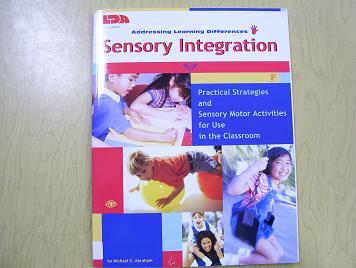Sensory Integration
Michael C. Abraham 128 pages/ 2002
Addressing the needs of children with sensory integration dysfunction, this handbook offers practical, detailed information. Using the tools provided, teachers can make careful observations to understand sensory problems. By recognizing a child's underlying difficulties, such as hypersensitivity or hyposensitivity to touch and movement, appropriate activities can be planned. The list of suggested strategies cover a wide range of specific needs. Categories include poor posture, clumsiness/poor coordination, excessive restlessness, fine motor problems, trouble with attention, learning behavior, weakness or floppiness of arms or legs, and bilateral integration problems. Working closely with occupational therapists, teachers can use the intervention techniques to enhance the abilities of children with sensory integration dysfunction.

